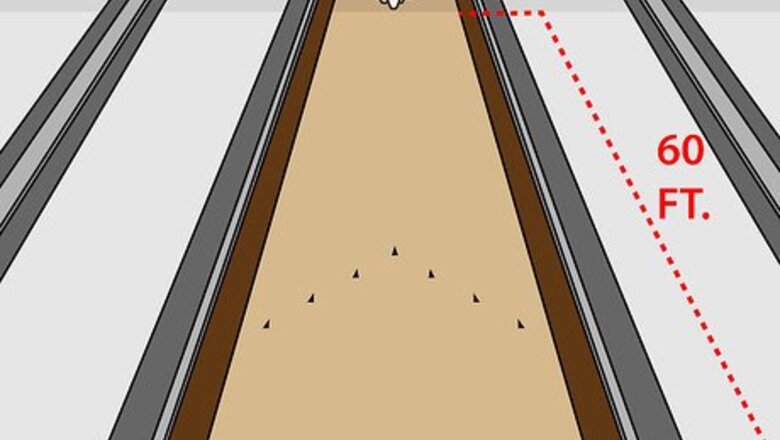
views
Learning the Basics of Bowling
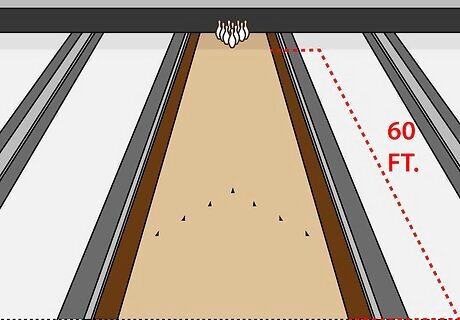
Understand the bowling lane. Before you begin to bowl, you have to understand the function of the bowling lane. A bowling lane is 60 feet (18.3 m) long from the foul line, the line closest to the bowler, to the head pin, the pin closest to the bowler. There are gutters on either side of the bowling lane. If a ball veers off the lane, it goes into the gutters and is out of play. The approach area is 15 feet (4.6 m) long and ends at the foul line. The bowler cannot overstep the foul line during their approach or their shot won't count. If a ball goes into the gutters and then bounces out and hits the pins, it won't count.
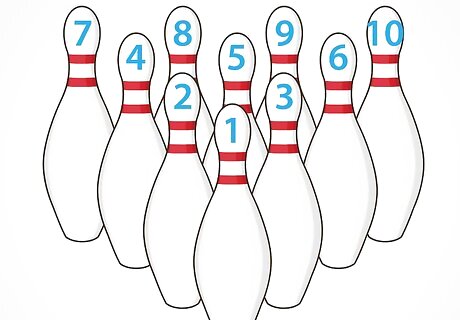
Understand the bowling pins. Ten pins are arranged at the end of the bowling lane at the beginning of every frame. They are arranged in a triangle formation, with the point of the triangle facing the bowler. There is one pin in the first row, which is the head pin, two pins in the second row, three in the third, and four in the fourth. The locations of the pins are assigned numbers 1-10. The pins in the back row have the numbers 7-10, the pins in the row above the back row are numbered 4-6, the pins in the second row are numbered 2-3, and the head pin is pin 1. All pins will earn the bowler one point if they are hit. The numbers are based on location, not value.
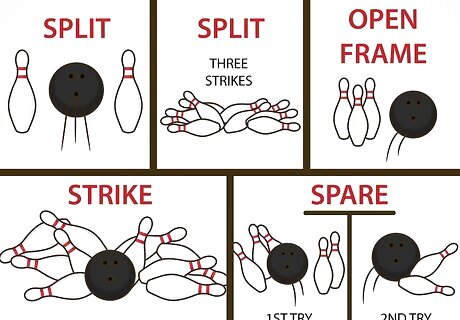
Learn the lingo. Before you can call yourself a true bowler, you should be aware of a few different bowling terms. Knowing these terms will also make it much easier for you to understand the rules. Here they are: A strike is when you knock down all the pins with the ball on your first try. A spare is when you knock down all the pins on your second try. A split is when the first ball of a frame knocks down the headpin (the pin closest to you) but leaves two or more pins that are non-adjacent. It's tough to hit a spare in this situation, especially if you have a 7-10 split, which is the hardest split to hit. A turkey is three strikes in a row. If any pins remain after the bowler's turn, it's called an "open frame."
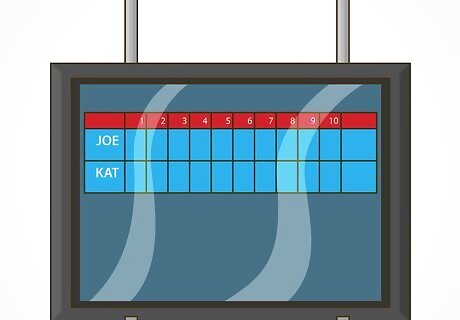
Understand how a game of bowling works. One bowling game consists of 10 frames. Each frame is equal to one turn for the bowler. The bowler's objective is to knock down as many pins as possible in a frame, ideally all of them. A bowler can roll the ball twice in each frame, provided that they do not hit a strike. A bowler gets an extra turn on the tenth frame if they knock down all the pins on the first turn.
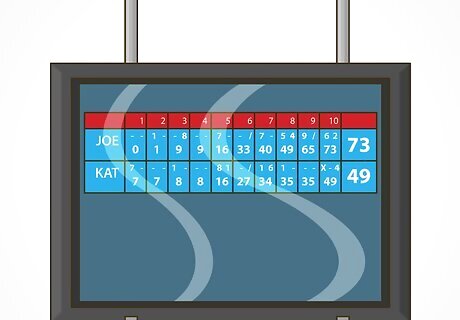
Learn the scoring. If a bowler has an open frame, then they simply get credit for the number of pins they knocked down. If a bowler knocked down 6 pins after two turns, they simply get two turns. However, if a bowler hits a spare or a strike, the rules get slightly more complicated. If a bowler hits a spare, then they should place a slash mark on their score sheet. After their next turn, they will receive 10 points plus the number of pins they knock down with that turn. So if they knock down 3 pins after their first turn, then they will get 13 points before their second turn. If they then knock down 2 pins in their second turn, they get a total of 15 points for that round. If a bowler hits a strike, they should record an X on their scoresheet. The strike will earn the bowler ten points plus the number of pins knocked down on the player's next two turns in the following round. The most a bowler can score in one game is 300 points. This represents 12 strikes in a row, or 120 pins that were knocked down in 12 frames. A perfect game has 12 strikes and not ten, because if the bowler gets a strike on the last frame, then they can take two more turns. If those two turns are also strikes, they will have 300 points. If a player rolls a spare in the last frame, then they can take one more turn.
Preparing to Bowl

Find a bowling alley. Go online to find a local bowling alley that suits your needs. Try to find a place that offers bowling lessons or has beginner bowling leagues. If you want to go bowling with friends, find a place that's rated for having a fun environment and maybe some food and snacks as well.

Go to the bowling alley you've chosen. Talk to fellow bowlers and staff, and see if you can even join a game. Alternatively, you can go to an alley with a group of friends. If you ask a crowd if you can join their game, make sure it isn't too competitive. You may even make new friends at the alley.
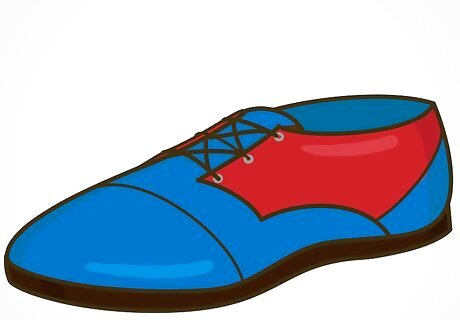
Get some bowling shoes. If you're a beginner, you can just rent shoes at the alley. If you want to kick up your game, you can buy a pair of your own shoes. Street shoes won't work for bowling because they'll either make you stick to the floor instead of sliding naturally, or they'll make you slip too much and injure yourself. If you don't wear bowling shoes, you can also damage or leave scuff marks on the alley floor. Rent a pair of shoes unless you want to get in trouble before you even start bowling. Don't forget to wear socks or bring socks to the alley. Some alleys sell socks, but they will be expensive.
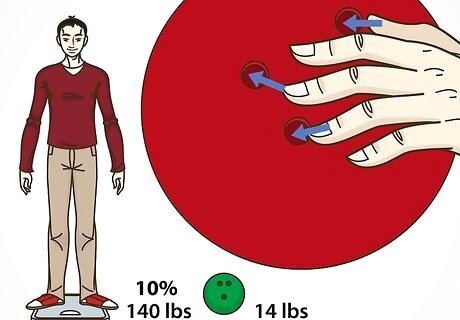
Choose the right ball. Before you can begin to bowl, you need to find a ball that is the right weight for you and which is the right size for your fingers. The balls will be labeled based on their weight, so a ball with "8" written on it will weigh 8 pounds. Here's how to find a ball of the right size and weight: Weight. A 14-16 lb ball would work for most adults with bigger hands, and a 10-14 lb ball would work for most adults with smaller hands. Generally, it's better to have a ball that is a little heavier because it will help you gain momentum. A general rule is that a ball should weigh 10% as much as your body, so if you weigh 140 pounds, you should bowl with a 14 lb ball. Size of the thumb hole. Your thumb should fit snugly into the single thumb hole. You should be able to take it out of the hole without it snagging or getting stuck, but the hole shouldn't be so large that you have to squeeze your thumb in the hole to hang on. Size of the middle finger holes. Once you've inserted your thumb, you should lay your middle and ring finger across the other two holes. If the span is correct, your two fingers should easily and comfortably lay over the two holes so the middle joint lines up with the side of the hole closest to your thumb. Curl your two fingers into the holes to make sure they fit snugly in the hole like your thumb.
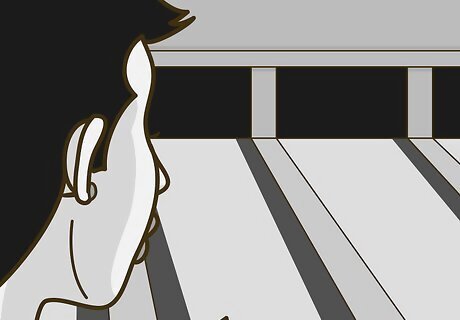
Find your bowling lane. Once you've signed up at the alley and put on your shoes, you will be directed to a bowling lane. If you get to choose your lane, pick a lane that is away from loud or noisy people. But it's your choice: you may be able to bowl better if you're surrounded by other bowlers.
Starting Bowling
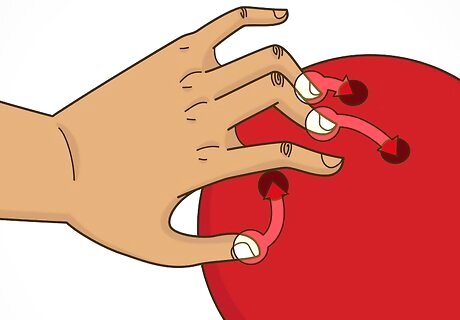
Hold the ball correctly. First, pick up your ball and head to the right spot in front of the bowling lane. Place your middle and ring finger in the top 2 holes and place your thumb into the bottom hole. Hold the ball slightly to your side with your bowling hand underneath the ball and your other hand resting on the bottom side of the ball for extra support. Keep your thumb on top of the ball at 10:00 position if you're right-handed. Use the 2:00 position if you're a lefty.
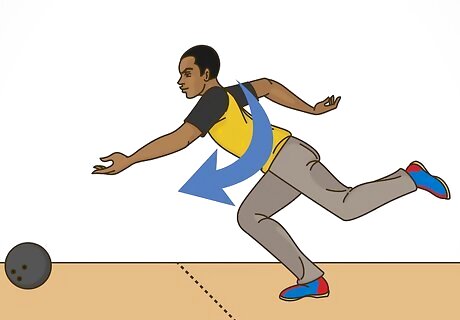
Approach the foul line. The standard approach consists of standing with your back straight, your shoulders centered squarely toward your target, and your knees slightly bent. Your ball arm should hand straight down by your side. Your back should be tilted slightly forward. Your feet should be slightly apart and your "slide foot" should be placed slightly in front of the other foot. Your slide foot will be the opposite of the hand you use to bowl (a right-handed bowler will slide with their left foot).
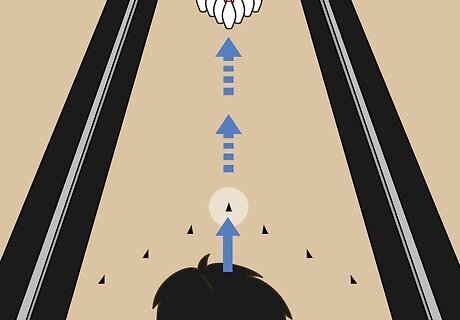
Work on aiming the ball. Your bowling lane should have a series of dots 7 feet (2.1 m) down the lane, and black arrows about fifteen feet down the lane. If you're a beginning bowler, you should aim to roll the ball in the center of these marks. Once you develop your bowling skills, you can aim to the left or the right of the marks when you hook the ball. Even if you aim your ball through the center of the marks, you may not be able to hit the pins because the ball can slow down or roll off toward the gutters. Just notice where the ball rolls when you do and don't bowl a solid frame and adjust your aim accordingly. You also want to hit in between the headpin and the pin right next to it. By doing this, you will hit most of the pins, creating more strikes. If you hit the head pin, you will likely create a spilt. Focus on aiming at the marks, not the pins.
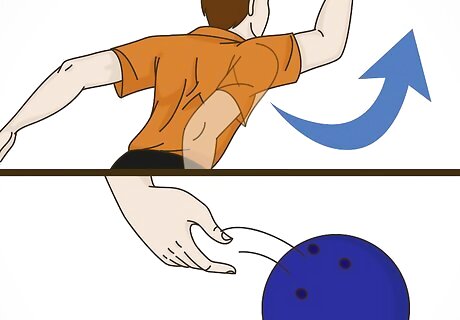
Release the ball. Maintain a straightforward, non-twisting approach of your body, as your ball and hand position should be held relatively the same -- underneath and behind the ball during the swing. Swing your ball arm smoothly back and then forward to release the ball. Release the ball when your arm has moved as far forward as it can go. When released properly, your thumb should come out first, followed by the fingers. This should help get rotation on the ball, which should help the ball hook and carry once it gets down the lane. Keep your eye on the target you're aiming toward as you release the ball. If you look down at your feet or the ball, you will lose balance and won't be able to aim your ball correctly.
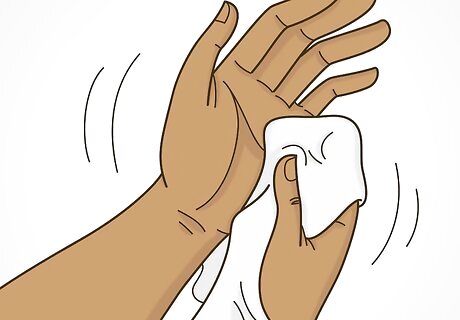
Wipe your hands after your turn is over. Make sure your hands are completely dry before you pick up the ball to start bowling each time. Use a cloth to wipe your hands, or at least wipe your hands on your pants if you don't have one. If your hands are still sweaty, the ball can slip out of your hands. You can also use rosin, which can be found in most pro bowling shops, to make your fingers and thumb slightly tacky and less slippery.
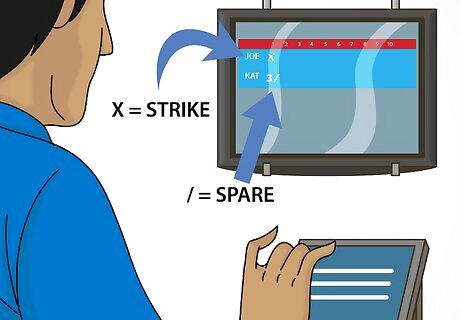
Keep score throughout the game. Most bowling alleys will have a computer near the sitting area that allows you to keep score. If an alley doesn't have a computer, then you will be given a score sheet to record your scores. Either way, the process is the same. Here's how to keep score: The area in the upper left of each frame is to record the first ball, and the box to the left is for the second ball and if you have a strike. A strike is marked with an "X" and a spare with a "/".
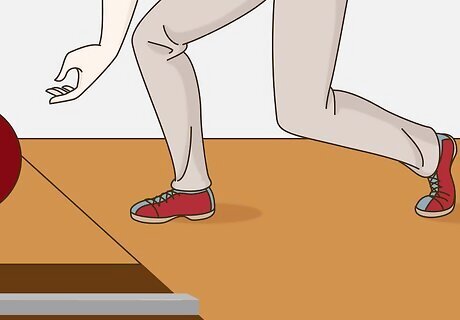
Finish close to the foul line. The distance between the delivery line and you should be about 6 inches (15 cm) if you want to have an optimal release. This means that the ball is lofted a small distance over the foul line before it makes contact with the lane. Thus, the ball gets further down the lane and it preserves energy when hitting the pins. Finishing too far from the foul line means you’ll have to move closer to it when you start in the stance. Remember that a strike is 10 plus the next two balls, whereas a spare is 10 plus the next ball. If you strike in the first ball in the 10th frame, you get two more balls to determine your final score. 300 is the highest score you can get.
Improving Your Bowling Game
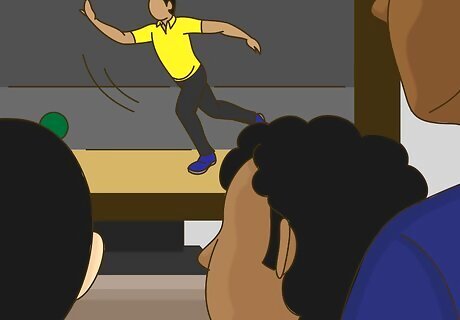
Watch bowling on TV. Carefully observe the professionals and see what techniques they use. You can also watch video clips of expert bowlers online. Try to imitate the bowler's stances in your own home. Just remember that you're watching experts and that your bowling technique will be much simpler than theirs.
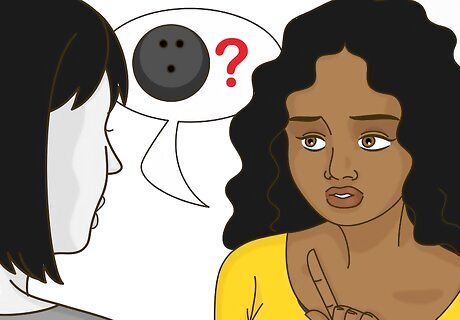
Ask for advice. If you want to really improve your game, seek out help from other, more advanced bowlers and from coaches. It will always help to have a critical eye watching you and you will gain new insight.
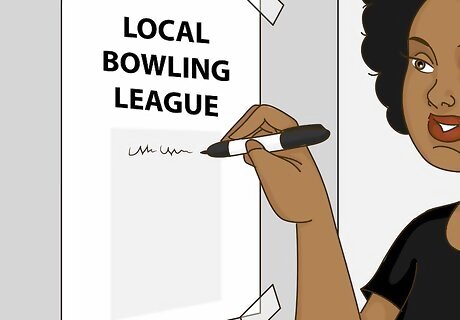
Join a bowling league. This is a great way to keep up regular practice and to make new friends.
Bowling etiquette
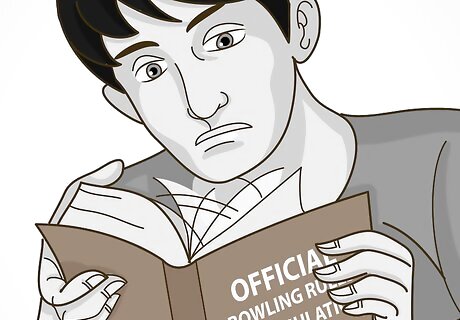
Read carefully and follow all the specific rules that are posted at the alley.
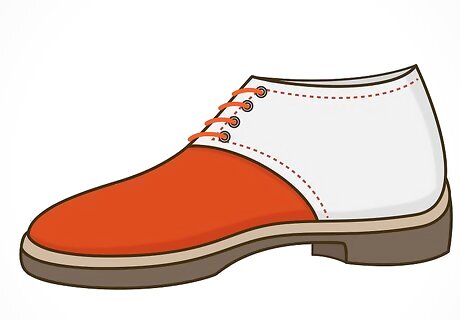
While on the lanes, wear only bowling shoes.
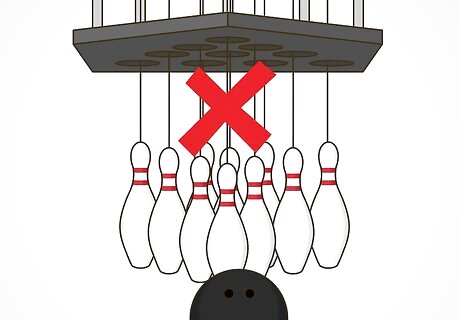
Don’t start bowling until the pin-setting machine has finished its cycle.
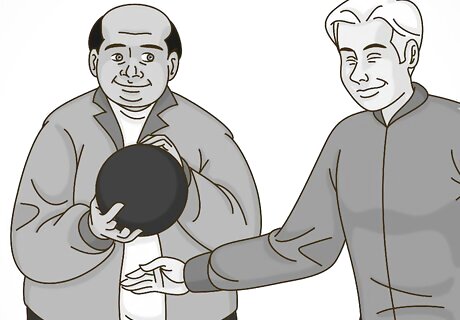
Allow the bowler in an adjacent lane to play first if you both approach the runway at the same time. Otherwise, the player who arrives first goes first.
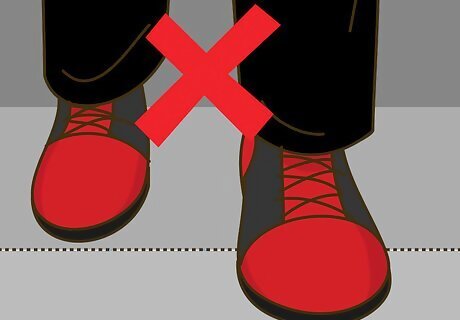
Don’t step or go beyond the foul line, even in casual play. Bowling is a sport so play fair. If you cross the foul line, you also risk slipping and other personal injuries.
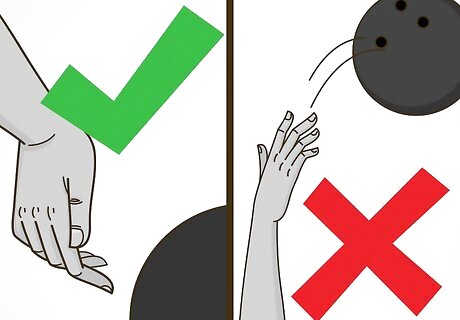
The ball should be bowled down the lane. Avoid any throwing or tossing of the ball, as it may damage the lane.
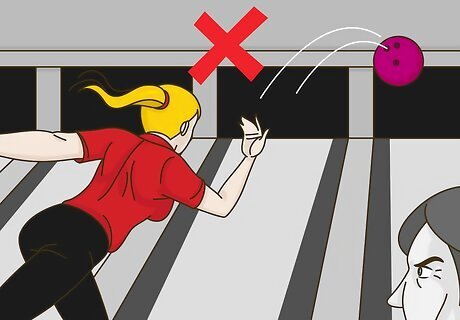
Don’t play your game on another lane, you should have enough space on your own.
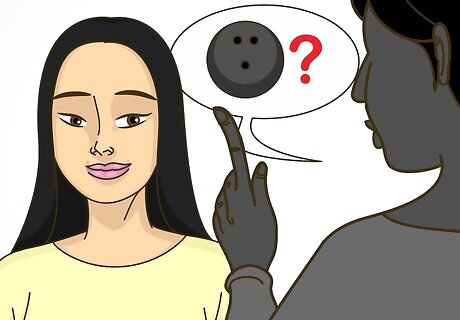
Always ask for permission first when using someone else’s ball.
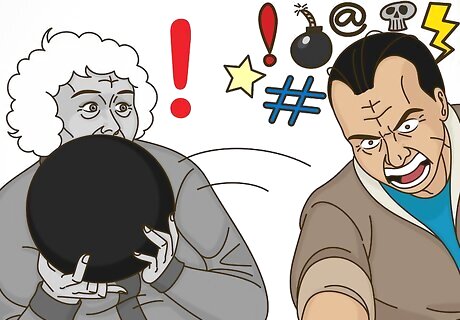
Avoid distracting other players while they are bowling. Check your language and limit swearing as much as you can.
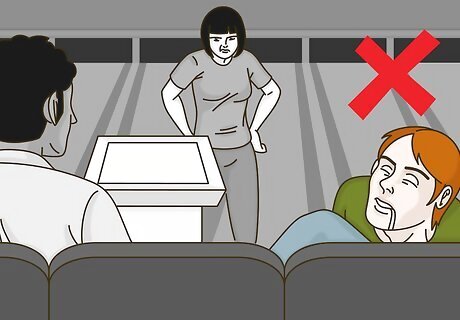
Be ready when it's your turn to bowl.
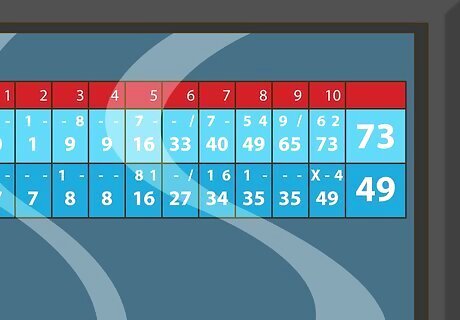
Try to keep the score accurate. Almost all alleys have now automated scorekeeping.















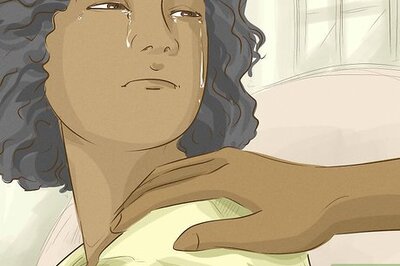

Comments
0 comment